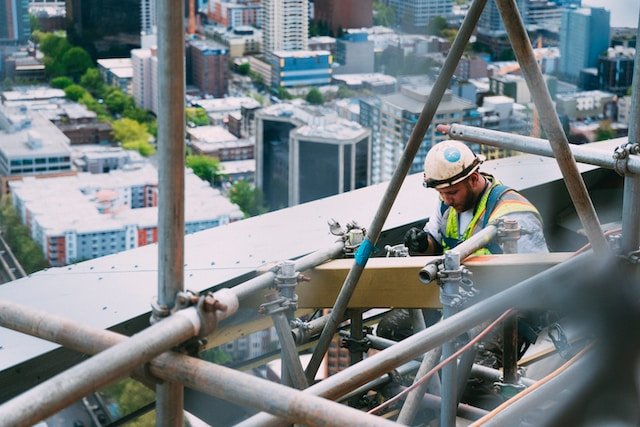Working at heights can be a thrilling yet dangerous endeavor. Whether you’re a construction worker, window cleaner, or any professional whose job involves ascending to significant heights, safety should always be your top priority. Accidents that occur while working at heights can lead to severe injuries or even fatalities, making it imperative to have the right equipment and mindset before starting any elevated task. In this article, we will delve into the essential aspects of working at heights, emphasizing the importance of adequate preparation to ensure both your safety and the success of the project.
Ensuring Adequate Training and Certification
Before embarking on any task that involves working at heights, it is crucial to undergo proper training and obtain the necessary certifications. Training programs designed to educate individuals about the risks associated with working at heights, as well as the correct usage of safety equipment, can significantly mitigate the chances of accidents. Certified professionals are well-versed in the art of securing themselves and their equipment, ensuring that they can navigate elevated spaces with confidence. Furthermore, these programs often include practical simulations and real-life scenarios, enabling workers to develop critical decision-making skills that are invaluable when working at heights. By investing in comprehensive training, you not only enhance your safety but also contribute to creating a secure working environment for everyone involved.
Choosing the Right Safety Equipment
When working at heights, one size certainly does not fit all. Selecting the appropriate safety equipment tailored to the specific task and environment is paramount. Safety harnesses, lanyards, helmets, and fall arrest systems are just a few examples of gear that should be carefully chosen based on the nature of the job. It is essential to assess the potential risks, weight capacity, and mobility requirements before making any decisions. For instance, a construction worker scaling scaffolding may require a different set of safety equipment compared to a technician performing maintenance on a communication tower. By investing in high-quality, industry-standard safety gear, you not only safeguard your life but also ensure the smooth progress of the project, enhancing overall efficiency and productivity.
Developing a Safety Mindset
Beyond the technical aspects of working at heights, cultivating a safety mindset is perhaps the most critical factor in accident prevention. This mindset involves being aware of your surroundings, understanding potential hazards, and consistently adhering to safety protocols. It also means having the confidence to stop work if conditions become unsafe, regardless of deadlines or project pressures. Regular safety briefings, hazard identification drills, and open communication between team members can foster a safety-conscious culture within the workplace. Additionally, encouraging workers to speak up about safety concerns without fear of reprisal promotes a proactive approach to accident prevention. By instilling a safety mindset in every team member, you create an environment where everyone is collectively responsible for their well-being and the well-being of their colleagues, making the task of working at heights not only safer but also more efficient and enjoyable.
Investing in Continuous Education
Continuous education is the cornerstone of mastering the art of working at heights safely and efficiently. Enrolling in working safely at heights courses offers professionals the opportunity to refresh their knowledge, learn about the latest safety standards, and enhance their skills. These courses often incorporate hands-on training, providing participants with practical experience in using various safety equipment and navigating challenging elevated environments. Moreover, instructors in these courses share real-life anecdotes and case studies, offering valuable insights into accident prevention and emergency response. By participating in such courses, workers can stay abreast of the ever-evolving safety guidelines, ensuring that their expertise remains current and relevant. Continuous education not only empowers individuals to make informed decisions while working at heights but also fosters a culture of lifelong learning within the industry. This commitment to ongoing education serves as a testament to the dedication of professionals toward ensuring their safety and the safety of those around them, creating a workplace where competence and vigilance go hand in hand.
Regular Safety Inspections: A Proactive Approach to Height Safety
Regular safety inspections are indispensable in maintaining a secure work environment when working at heights. Conducting systematic inspections of all safety equipment, structures, and work areas helps identify potential issues before they escalate into hazards. Harnesses and lanyards, for example, must be inspected for signs of wear and tear, ensuring that they function correctly during critical moments. Scaffolding, guardrails, and other elevated structures should be examined for stability and integrity. Moreover, these inspections should encompass the assessment of weather conditions, as wind, rain, or snow can significantly impact the safety of working at heights.
Effective Communication: The Key to a Safe Working Environment
Clear and effective communication among team members is paramount when working at heights. Establishing a communication protocol ensures that everyone is aware of their roles, responsibilities, and potential hazards. Team members must be able to convey their concerns and observations without hesitation, fostering an atmosphere where information flows freely. Whether it’s discussing changes in weather conditions, alterations in work plans, or reporting a malfunctioning piece of safety equipment, open communication can prevent accidents and promote a collaborative approach to safety. Additionally, creating a culture where workers are encouraged to ask questions and seek clarification leads to a better understanding of safety procedures and best practices. Through open lines of communication, professionals can address uncertainties promptly, allowing them to work confidently and securely at elevated heights.

Emergency Response Preparedness: A Crucial Aspect of Working at Heights
Being prepared for emergencies is a fundamental aspect of working at heights safely. Developing a comprehensive emergency response plan that outlines procedures for various scenarios, such as equipment failures, injuries, or adverse weather conditions, is essential. All team members should be familiar with these protocols and undergo regular drills to ensure they can respond effectively under pressure. Additionally, having readily accessible first aid kits, emergency contact information, and rescue equipment is imperative. Professionals must also be trained in basic first aid and CPR, enabling them to provide immediate assistance in case of injuries.
In the realm of working at heights, preparation and vigilance are the cornerstones of a secure and productive environment. The importance of adequate training, the selection of appropriate safety equipment, and the cultivation of a safety mindset cannot be overstated. Professionals must continuously educate themselves through working safely at heights courses, ensuring their skills are up-to-date with the latest safety standards. Regular safety inspections, effective communication, and emergency response preparedness form the backbone of accident prevention, creating a workplace where risks are minimized, and workers can focus on their tasks with confidence.
Ultimately, the responsibility for ensuring safety at heights lies not only in the hands of individuals but also within the culture of the workplace. By fostering a collective commitment to safety, employers and employees alike create an atmosphere where everyone is accountable for their well-being and the well-being of their colleagues. Through these proactive measures, accidents can be prevented, lives can be saved, and the challenges of working at heights can be met with the utmost confidence. As we continue to innovate and advance, it is crucial never to compromise on safety, making it a priority in every project, every task, and every ascent. Together, by prioritizing proper preparation and vigilance, we can create a future where working at heights is not only a necessity but a secure and empowering experience for all.


